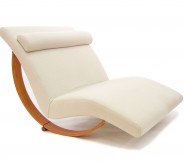Lot #32 - Arthur Boyd
-
Auction House:Mossgreen
-
Sale Name:The Lowenstein Collection of Modern & Contemporary Australian Art
-
Sale Date:07 Mar 2017 ~ 6pm
-
Lot #:32
-
Lot Description:Arthur Boyd
(1920-1999)
Dancers, 1952-4 (cast 1990s)
Bronze, ed. foundry proof (edition of 9)
48 cm high, 32 cm wide, 32 cm deep
signed and numbered to base ‘Arthur Boyd F/P’ with Meridian Foundry stamp -
Exhibited:Peter Bray Gallery, Melbourne, 7-17 December 1954, cat. no. 7(titled Two Dancers) (ceramic version)
-
References:Gino Nibbi, ‘Arthur Boyd: a Victorian artist’, in Ern Malley’s Journal, vol. ii,no. 1, May 1955, pp. 14-16, (illustrated, glazed terracotta version); Franz Philipp, Arthur Boyd, Thames and Hudson, London, 1967,pp. 42-3, 77 and 253 (cat. no. 7.11), (glazed terracotta version); Grace Cochrane, ‘Ceramic Tile Paintings and Sculptures’, in Deborah Hart (ed.) Arthur Boyd: agony and ecstasy, National Gallery of Australia, Canberra, 2014, p. 166 (illustrated, glazed terracotta version)
-
Notes:RELATED WORK: Dancers, 1952-4, glazed terracotta, private collection(sold Deutscher-Menzies 2005, $84,000) NOTE: Although he is largely celebrated as an eminent painter, there was a moment that could have – should have – signalled the beginning of a rich sculptural oeuvre for Arthur Boyd. That juncture was December 1954, when Boyd exhibited sixteen ceramic sculptures in Melbourne’s Peter Bray Gallery. This was an important and singular exhibition for the artist. Although he had worked with glazed terracotta mediums for over a decade – he churned out countless post-war utilitarian wares through the Arthur Meric Boyd Pottery business between 1944-49, and had more recently completed a notable body of work in the form of painted and glazed ceramic tiles – the 1954 exhibition marked the first, and last, show solely devoted to three-dimensional sculpture. The exhibition at Peter Bray’s was also a transitional one for Boyd. Whilst it advanced some the religious themes he had represented on canvas and painted tiles the preceding decade, there were also new Boydian motifs and themes which would go on to define the artist’s later work. Four of the sixteen works exhibited had their genesis in the pages of the New Testament. They included David and Saul (National Gallery of Victoria, Melbourne) and Judas Kissing Christ (Art Gallery of New South Wales, Sydney). The others pointed to more quotidian subjects that included familial and intimate relationships including The Sisters (Art Gallery of South Australia, Adelaide); and Mother and Child (The University of Western Australia Art Collection, Perth); and even the solitary figure, Bride – anticipating the protagonist of the next complex chapter in Boyd’s work – Love, Marriage and Death of a Half-Cast, or better known as the ‘Bride’ series. The religious and secular themes in the exhibition were each treated with distinct emotional charge, stylistic execution and technical finish. The Christian figures evoke a deep sense of pathos that recalls Germanic renaissance sculpture. They are modelled like organic lumps of knobbly flesh; their coarse and crusty texture exposing a grotesque quality. Conversely, the genre subjects exhibit a sense of playfulness and internal joy. Like a jig-saw puzzle, they are the result of assembled slabs of clay. Even their finish is smoother and more polished than the former group. Evidently, Boyd felt he had greater freedom to introduce and experiment with modern techniques and styles in his non-religious works. Dancers clearly belongs to this latter group and is closely related to the themes of embracing lovers and swaying couples – subjects which Boyd had explored earlier in his painted tiles, and developed later in his paintings and graphics. They emanate a sense of joie de vivre, which is absent in the religious counterparts. Their quiet allegria is underscored by their simple, naïve physiognomic expressions – sometimes aloof, at other times caught in a moment of self-contained bliss. In the present work, the figures are oblivious to any outside viewer; their happiness dependent only on their embrace and the tune to which they sway. Trapped in a bubble, the figures envelope each other whirlwind-like. The most charming aspect of this work is a small detail near the base. The smaller figure rests their feet on the taller dominant one, the one presumably leading the dance. This intimate and humanist touch shows typical Boydian sensitivity. Stylistically, the present work also exhibits a strong Picassoan bias. Writing in Arthur Boyd’s ‘Retrospective’, art historian Deborah Edwards noted that ‘the dominant features of the works, the enormous beaked noses, bulbous eyes and claw-like hands’ openly referenced the related works of Picasso.1 Even the modular construction of the work in geometric blocks of clay recalls the Spaniard’s manner. There are, however, traces of an expressionist’s touch too, with finger marks throughout the works – evidence of a hand-moulded surface. This bronze version is less complex in its chromatic hues than the ceramic figure after which it was cast. The taller dancer is mostly distinguished by an oxidized-green that contrasts the earthy colours of the shorter partner. Reflecting on the exhibition some years on, Boyd said that he ‘did what was dictated to almost by the slabs of clay … I didn’t for a minute think I was doing sculptures. What came out was something that happened to be something I wanted to express, a feeling, an idea.’2 Indeed, with Boyd, the problems of aesthetics is almost always secondary to the concerns of expression. The show at Peter Bray’s created a stir in art circles and enjoyed an overall sucèss d’estime. Although the critic for The Age thought it ‘the most vital and unconventional’ of shows, they evidently found the Picassoan influence too confronting, and continued noting that ‘for all the illogical distortions and obscure symbolism, Mr Boyd’s inherent artistry and creative ingenuity rise above weaknesses in technique.’3 Conversely, writing for the Argus, Arnold Shore found it ‘a most unusual series’ and lauded the artist when he wrote that ‘these large pieces testify to the artist’s courage and technical resource.’4 On visiting and reviewing the show, Franz Phillip seems to have perfectly captured the feeling on entering the space: ‘one felt like walking in a strange forest of gnomic beings, a world magically convincing, yet imaginatively separate from us.’5 Public institutions around the country, including the National Gallery of Victoria and Art Gallery of South Australia, quickly secured a number of the sculptures for their permanent collections. The commercial and critical success of the show should have signalled the start of a fruitful sculptural parallel to Boyd’s paintings. However, Boyd neglected the three-dimensional medium hereafter, leaving only a tiny corpus of terracotta and bronze sculpture behind. Dancers is one of the best-know works from what could be considered one of the most interesting sculpture exhibitions in mid-twentieth century Australia. Petrit Abazi 1 Deborah Edwards, ‘The Ceramics’, in Barry Pearce (ed.), Arthur Boyd: retrospective, Beagle Press and Art Gallery of New South Wales, Sydney, 1993, p. 172 2 cited in Deborah Edwards, ‘The Ceramics’, in Barry Pearce (ed.), Arthur Boyd: retrospective, Beagle Press and Art Gallery of New South Wales, Sydney, 1993, p. 172 3 ‘Art Notes: unconventional sculpture in ceramic’, The Age, Melbourne, 7 December 1954, p. 2 4 Arnold Shore, ‘Sculpture that Startles’, The Argus, Melbourne, 7 December 1954, p. 13 5 The Quarterly Bulletin of the National Gallery of Victoria, Melbourne, vol. IX, no. 1, 1955, p. 3
-
Estimate:A$20,000 - 22,000
-
Realised Price:
-
Category:Art
This Sale has been held and this item is no longer available. Details are provided for information purposes only.










